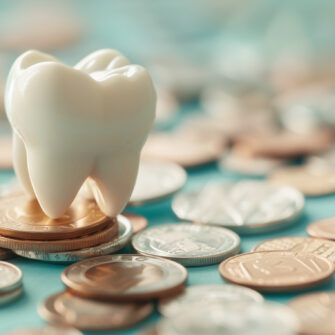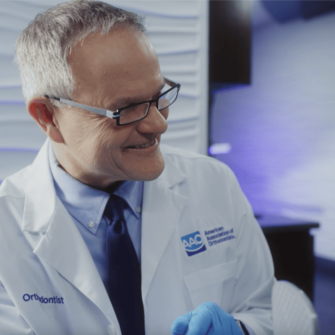You may have seen a trend online about “mewing,” a non-medical term that describes a do-it-yourself facial restructuring method.
While tongue posture plays a role in facial development, mewing’s promises may be as distorted as some Instagram filters. Let’s dive into the science behind the hype, the potential pitfalls, and why consulting an American Association of Orthodontists (AAO) orthodontist is always the safest bet for a smile you’ll truly love.
How Mewing Claims to Work
Mewing, a technique that has gone “viral” online, is the movement of flattening your tongue against the roof of your mouth in an attempt to define your jawline. Proponents claim it can even realign teeth and improve overall facial aesthetics. Sounds too good to be true, right?
The Reality Check:
Unfortunately, scientific evidence supporting mewing’s jawline-sculpting claims is as thin as dental floss. A complex interplay of genetics, bone growth, and muscle development influences facial structure. Simply changing tongue placement isn’t enough to magically correct misaligned teeth, reshape your jawline, and prevent the need for orthodontic treatment.
How Facial Restructuring Actually Works
Facial restructuring is not simply achievable by changing your tongue’s resting position. It’s a complex process that involves moving jaw bones, facial bones, and soft tissue. Maxillofacial deformities are usually corrected with orthodontic treatment. Mewing has generated significant social media buzz lately. However, there’s no current research that suggests the technique provides any benefit to your jawline or oral health.
Your tongue is actually one of the strongest muscles in your entire body. Hence, it plays an important role in its complex relationship with your mouth’s other structural elements, such as teeth and bones. Mewing enthusiasts might be surprised to learn that improperly forcing your tongue into unnatural positions may lead to undesired effects and could actually:
- Disrupt tooth alignment
- Worsen bite problems and speech issues
- Require complicated treatment to resolve
While DIY methods for facial restructuring, like mewing, are appealing options for those seeking an easy, at-home solution, they don’t fully account for what is happening below the surface. The AAO does not recommend any attempts to move teeth or align jaws without appropriate supervision, as they likely won’t achieve the results you’re aiming for.
Can You Fix Your Tongue’s Resting Position?
The good news is a trained orthodontist can help evaluate your tongue’s resting position and, if necessary, work with other professionals to guide your tongue into a more favorable position. AAO orthodontists understand the structure of your teeth, jaw, and facial bones. They can also correctly evaluate how changing one part of the mouth may impact other parts—for example, how the natural resting position of your tongue may be affecting your speech or causing bite problems.
Before contemplating any DIY treatment, weigh the potential for irreversible and costly damage that may result if not executed correctly. Seeking guidance from an AAO orthodontist in advance can ensure proper bite alignment without negative consequences.
See an AAO Orthodontist for Safe and Effective Jaw Positioning
An orthodontist can safely and effectively correct issues. After earning a postdoctoral degree specializing in aligning teeth and bites and years of experience in the specialty, AAO orthodontists focus exclusively on the movement of teeth, jawbones, facial bones, and soft tissue, providing specialized care to correct jaw positioning or teeth alignment.
To discuss your facial restructuring options, consult an AAO orthodontist. Find an orthodontist near you at aaoinfo.org/locator.



